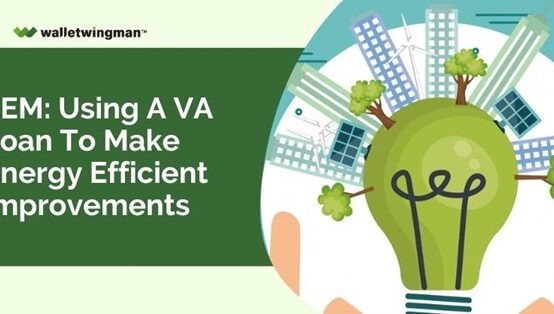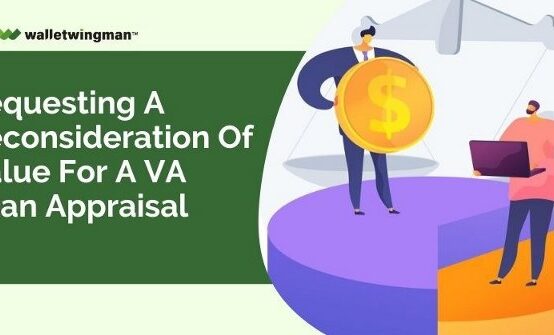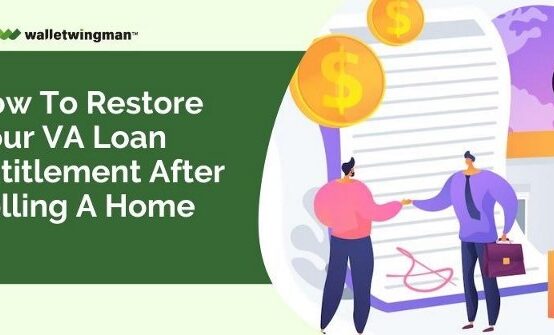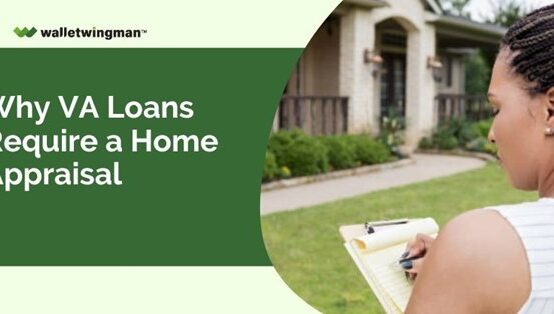If you use a VA loan to buy a house, the home must be appraised to determine its market value and overall condition. The typical cost of a VA appraisal can differ depending on your location and the size of the home.
Generally, a property appraisal associated with a VA loan can cost anywhere from $500 to just over $1,000, depending on the location and other factors. You might pay more if you live in an area where qualified appraisers are in short supply. The buyer is responsible for paying the VA home loan appraisal cost unless the seller or lender agrees to cover it.

Appraisals Required for VA Home Loans
As a government-backed mortgage program, VA loans have specific requirements for borrowers and also for the properties they purchase. For example, the Department of Veterans Affairs requires all homes to be appraised prior to closing to ensure they meet VA appraisal requirements which are outlined in the VA appraisal checklist and guidelines.
The VA requires home appraisals for two main reasons:
- To determine how much the property is worth in the current market
- To ensure that the home meets their minimum property requirements
VA Appraisal Process and Guidelines
During the VA appraisal process, a VA-approved appraiser will review the home you’re trying to buy along with recent sales in the same area. They will use this information to estimate the property’s value at the time of purchase, following strict VA appraisal guidelines. These guidelines ensure that the appraisal process is thorough and consistent across all VA loan transactions.
The appraiser will thoroughly assess the property, considering its size, condition, and amenities, and further compare it to similar properties that have sold in the area recently. This information will determine its market value.
By adhering to the VA appraisal guidelines, appraisers help maintain the integrity of the VA loan program and ensure that veterans are purchasing homes that meet established standards.

Appraisal Cost Typically Ranges from $500 – $1,000
Generally speaking, home appraisal fees for VA loan transactions can range from around $500 to $1,000. That’s for a single-family home. Appraisals for multi-family properties like duplex and triplex units can cost more since they involve multiple residences.
Understanding the VA Loan Funding Fee
In addition to the appraisal cost, the borrowers should be aware of the VA loan funding fee. This fee is only a one-time payment made to the Department of Veterans Affairs to help offset the loan program’s cost. The amount of the funding fee is calculated based on factors such as the borrower’s military service, the down payment amount, and whether it’s their first or subsequent use of a VA loan.
For example, eligible borrowers who make no down payment on their VA loan will typically pay a higher funding fee than those who make a down payment. Conversely, borrowers with a service-connected disability may be exempt from paying the funding fee altogether.
Finding Appraisal Costs for Your State
So, how much does a VA home appraisal cost in your part of the country?
The good news is you don’t have to guess! You can actually look this up on the Department of Veterans Affairs website to find out how much you might have to pay.
Here’s how to find the typical appraisal costs for your state:
- Visit the VA appraisal fees section of the VA.gov website.
- Scroll down and find the regional loan center for your state.
- Download the PDF document with appraisal fees and timelines.
- The PDF will show typical fees for your state by property type.
Your mortgage lender should also tell you how much a VA appraisal costs in your state based on the kind of property you wish to purchase. This process is very transparent, so you shouldn’t encounter any surprises or unexpected fees.

Higher Fees in ‘High Demand’ Counties
You might wonder why VA home appraisal fees vary so much.
It comes down to supply and demand. In some counties across the U.S., there just aren’t enough qualified appraisers to meet the constant demand from lenders. This kind of shortage can result in higher appraisal fees.
As it states on the Department of Veterans Affairs website:
“Several counties across the nation have been identified as High Demand Counties, counties in which the increased demand for appraisal services has created shortage of available appraisers. While VA considers this to be a temporary market fluctuation, appraisal fees have been increased in these counties to reflect the increased demand in this seller’s market.”
They mention “several” high-demand counties in this quote. In reality, there are dozens of counties across the country where VA-approved appraisers are needed. Appraisal costs can be higher in those areas simply because there aren’t enough qualified people to do the work.

The Buyer Usually Pays for It
As mentioned above, the home buyer usually pays for the home appraisal when a VA loan is being used. The buyer’s mortgage lender will order the appraisal, so the fee usually goes to the buyer. Understanding VA home loan interest rates is also essential for buyers to assess their overall financial commitment. VA home loans typically offer competitive interest rates, often lower than traditional loans, making them an attractive option for eligible veterans. However, it’s essential for buyers to consider how these rates will impact their monthly mortgage payments and long-term financial plans.
Utilizing tools such as a VA home loan calculator can further assist buyers in understanding their potential loan terms and monthly payments. By inputting the current interest rates along with other relevant financial information, buyers can estimate their mortgage payments and evaluate their affordability more accurately.
But, like many things in the real estate world, this is up for negotiation.
Sometimes a seller will agree to pay the buyer’s appraisal fee, possibly along with other costs as well. The VA allows sellers to contribute money toward some of the buyer’s expenses, and that includes the home appraisal as well.
Check with your real estate agent before asking for a seller contribution. In a fast real estate market where homes sell quickly, sellers tend to be less inclined to contribute money toward the buyer’s fees. However, in a slower market, a seller might be willing to offer some “concessions” in order to attract more offers from buyers.
Seek your agent’s advice on this matter.
Reinspection Fees Following Seller Repairs
The fees and charges mentioned above cover the standard charge for a VA appraisal. But in some cases, a home buyer might encounter additional expenses relating to the appraisal.
If the appraiser determines that the home falls short of the VA’s minimum property requirements for some reason, the seller could make repairs to bring it up to standard. These MPRs encompass various aspects of the property, including its structural integrity, safety features, and overall habitability. Common issues that may trigger the need for seller repairs include deficiencies in the roof, foundation, electrical systems, plumbing, or other critical components of the home.
Once the repairs have been completed, the appraiser can charge an additional $150 fee for a reinspection of the property. This reinspection serves as a critical step in the process, ensuring that the necessary repairs have been properly addressed and that the property now meets the required standards set forth by the VA. During the reinspection, the appraiser will conduct a thorough examination of the property to verify that the identified issues have been adequately resolved.
It’s essential to recognize the significance of the reinspection in maintaining the integrity of the VA loan program and safeguarding the interests of the borrower. By confirming that the property meets all applicable MPRs, the reinspection helps to mitigate risks associated with potential structural or safety hazards, providing peace of mind to the buyer.
However, it’s essential for buyers to be aware of the potential costs associated with seller repairs and the reinspection fee. While the seller is usually responsible for covering the costs of repairs, buyers may incur additional expenses if a reinspection is required. Therefore, effective communication and negotiation between the buyer and seller are crucial in determining how these costs will be addressed.
In summary, the reinspection process following seller repairs plays a key role in making sure that the property meets the VA’s minimum standards for safety and habitability. While it may entail additional expenses, it ultimately serves to save on the interests of all parties involved in the VA loan transaction.
Note: This guide explains the typical cost for a home appraisal in a VA loan scenario. Every real estate transaction is different, so portions of this article might not apply to your particular situation.


 Types of Properties You Can and Cannot Buy With a VA Loan
Types of Properties You Can and Cannot Buy With a VA Loan  EEM: Using a VA Loan to Make Energy Efficient Improvements
EEM: Using a VA Loan to Make Energy Efficient Improvements  Requesting a Reconsideration of Value for a VA Loan Appraisal
Requesting a Reconsideration of Value for a VA Loan Appraisal  How to Restore Your VA Loan Entitlement After Selling a Home
How to Restore Your VA Loan Entitlement After Selling a Home  Debunked: 8 VA Loan Myths, Misconceptions and Misunderstandings
Debunked: 8 VA Loan Myths, Misconceptions and Misunderstandings  Why VA Loans Require a Home Appraisal
Why VA Loans Require a Home Appraisal 